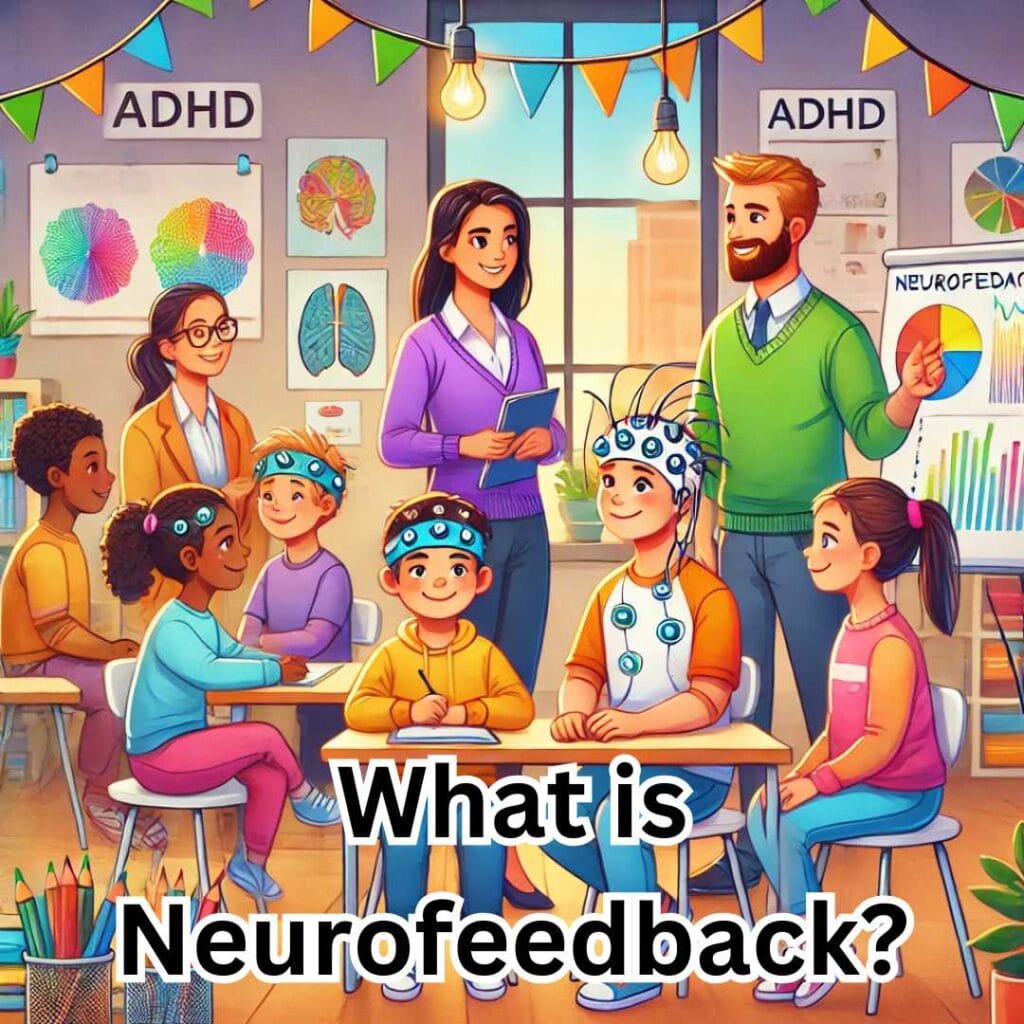Understanding Neurofeedback as a Treatment for ADHD: A Comprehensive Analysis of Recent Findings

In a recent discussion by ADHD expert Dr. Russ Barkley, he reviewed a pivotal study examining neurofeedback, also known as EEG biofeedback, as a treatment for Attention Deficit Hyperactivity Disorder (ADHD). This commentary sheds light on neurofeedback’s history, methodology, and its scientific validation—or lack thereof—in managing ADHD symptoms. Let’s delve into the analysis of this treatment, its potential, and its limitations.
What is Neurofeedback?
Neurofeedback is a form of biofeedback where brainwave activity is measured and modified to encourage desired mental states. It uses electrodes placed on the scalp to monitor electrical activity in the brain (EEG). Participants engage in activities or games that provide visual or auditory feedback, helping them learn to adjust their brainwave patterns. The premise is that these adjustments, such as increasing beta waves associated with focus or decreasing theta waves linked to drowsiness, can improve ADHD symptoms like attention and concentration.
This non-invasive technique is grounded in operant conditioning—a behavioural principle where desired behaviours are reinforced through rewards.
Historical Background
Neurofeedback’s roots trace back to the early 1960s, with notable contributions by researchers like Joe Kamiya and Barry Sterman. Kamiya pioneered conditioning brainwave activity, while Sterman extended the approach to reducing epileptic seizures in cats. By the 1970s, Joel Lubar began applying neurofeedback to children with ADHD. While initial studies sparked interest, scientific scrutiny has raised concerns about the robustness of early findings.
Neurofeedback and ADHD
ADHD is often associated with distinctive brainwave patterns, including lower beta activity (linked to concentration) and higher theta activity (associated with a relaxed or under-aroused state). These EEG irregularities have been the foundation for neurofeedback as a potential treatment. The goal is to train the brain to adopt more typical wave patterns, theoretically improving attention and reducing hyperactivity and impulsivity.
Early studies suggested promising outcomes, reporting improvements in neuropsychological tests and behaviour ratings. However, these studies were frequently criticised for methodological flaws, including:
- Lack of randomised control groups
- Absence of placebo (sham neurofeedback) conditions
- Poor blinding of evaluators to treatment conditions
What Did Recent Research Find?
A meta-analysis published in JAMA Psychiatry (2024) aimed to clarify neurofeedback’s efficacy in ADHD management. The study reviewed 38 randomised clinical trials involving over 2,400 participants. These trials applied rigorous scientific standards, including blinded assessments and placebo controls.
Key findings of the meta-analysis include:
- No Meaningful Benefits: The review found no evidence that neurofeedback significantly improves ADHD symptoms in real-world environments, such as home or school settings.
- Processing Speed: A minor improvement in processing speed was observed on neuropsychological tests. However, Dr. Barkley emphasised that such tests lack ecological validity—they don’t correlate well with actual ADHD symptoms or daily functioning.
- Placebo Effects: Sham neurofeedback yielded similar results to active neurofeedback, suggesting that improvements might stem from placebo effects rather than the treatment itself.
Why Doesn’t Neurofeedback Work?
Despite its theoretical appeal, neurofeedback may not address the root causes of ADHD, which involve complex neurobiological and genetic factors. ADHD is a multifaceted condition impacting executive functions like planning, emotional regulation, and impulse control—areas that neurofeedback does not directly target. Additionally, the brain’s adaptability and natural variance in EEG patterns make it challenging to establish consistent, lasting changes through neurofeedback alone.
Broader Implications and Future Directions
While this review dismisses neurofeedback as an effective ADHD treatment, it highlights broader issues in ADHD research:
- Need for Rigorous Trials: Many treatments fail to hold up under stringent scientific scrutiny. This underscores the importance of placebo controls, blinding, and ecological validity in evaluating interventions.
- Complexity of ADHD Treatment: ADHD is best managed through multimodal approaches, including behavioural therapies, parent training, educational accommodations, and, when appropriate, medication.
- Role of Neurofeedback in Adjunctive Care: Despite its limited standalone efficacy, neurofeedback may still have a role as a supplementary tool for specific individuals. More personalised research could explore subgroups that might benefit.
🤔 What is Neurofeedback?
Neurofeedback (or EEG biofeedback) measures brain activity using sensors placed on the head. It turns this information into a game or visual display, and the person “trains” their brain by trying to reach certain goals in the game. The idea is to improve focus and reduce ADHD symptoms by reinforcing better brain activity patterns. Sounds cool, right?
🚨 What Did the Research Say?
This review analysed 38 studies involving over 2,400 people with ADHD—that’s a lot of data! Here’s what they found:
✅ No significant improvements in ADHD symptoms were seen in real-world settings like school or home.
✅ There was a small boost in processing speed (how quickly someone processes information), but it doesn’t actually help with ADHD behaviours or challenges in daily life.
✅ The effects were no better than placebo treatments—meaning the changes might just come from the belief that the treatment works, not the neurofeedback itself.
🧠 Why Doesn’t It Work?
ADHD is a complex condition affecting brain functions like impulse control, focus, and emotions. While neurofeedback might sound promising, it doesn’t directly address these deeper issues. Plus, ADHD symptoms show up in many ways, making it hard to create a “one-size-fits-all” brain training program.
So, What Should You Do?
If your child or student has ADHD, don’t worry—there are evidence-based treatments that really help!
⭐ Behavioural therapies teach coping strategies.
⭐ Parent/teacher training helps adults support children effectively.
⭐ Medication can be a powerful tool when used appropriately.
⭐ And don’t forget classroom adjustments, routines, and emotional support—they make a world of difference!
The Takeaway
While neurofeedback might not be the solution we hoped for, ADHD can be managed with the right combination of strategies. Every child is unique, so finding what works for them is key. ❤️
Have questions about ADHD or want to share your experience? Let’s chat in the comments below! Together, we can help kids with ADHD thrive at home, in school, and beyond. 💪✨
#ADHD #ParentingTips #TeachersOfInstagram #ADHDSupport #MentalHealthMatters #Neurofeedback

Responses